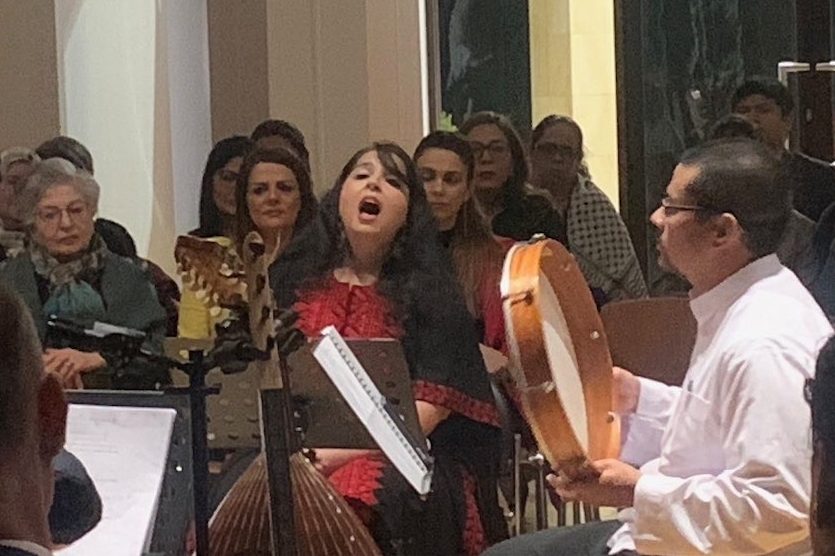
Photography / “Hand/Made/Held/Ground” by Brenda L Croft, Canberra Museum and Gallery until January 22. Reviewed by CON BOEKEL
IN 2014 Brenda L Croft found a kurrwa (stone axe) at Bore 17 in Gurindji country.
She was also handed a jimpila (spearhead) made by Jabiru/Jabaru, a Jaminjung elder who had lived at Yarralin and Daguragu in the Victoria River District. The objects have the effortless beauty that goes with tools refined over thousands of generations and made by hand using natural materials.
Croft resurrects the objects by way of a research-led, action-based art practice. Ancient meanings are revealed and the objects are infused with new meaning. The context is invasion and colonisation.
The people living at Jabiru’s Yarralin as late as 1974 had no running water, no power supply, and no sewage system. There was no school. There was sporadic basic healthcare. There was no store. There were some tin sheds with dirt floors. The sheds had neither doors nor glass. Sickness was rife. At times there was hunger. Individuals sometimes fought and damaged themselves or each other even further in this existential chaos.
Croft’s kurrwa and jimpila are embedded in this history.
In November 2021 Morrison’s federal government and the Catholic Church apologised for the child theft and child abuse relating to the Garden Point Catholic Mission. Some of the survivors refused to forgive, citing irreparable life-long suffering. Croft’s cultural connection to the objects is by way of her grandmother Bessie and her father Joe Croft, members of the Stolen Generations and members of the Gurindji/Malngin/Mudbarra nations.
Originally, spearheads were made of stone. One early adaptation in the Victoria River District was to use glass to make spearheads. Croft has taken this a step further.
Croft uses coloured lead crystal and glass, including uranium glass, to make moulded spearheads and moulded lead crystal to make axe-heads. Multiple casts of the axe and spearheads form the major installations Croft has created as part of the exhibition. Blinking lights in the mounts reflect footsteps, heartbeats and the tears of ancestors.
The installations are complemented by works on paper in which the tracks of Croft’s journeys through country are superimposed on prints of aerial photographs. The choice of an aerial perspective mirrors traditional indigenous mapping practice. The resolution of the aerial photography is, technically, old-fashioned. A major consequence is that the post-1880 built environment is filtered out. Croft’s learning tracks become the primary pictorial focus. My heart jumped a little when I discovered that I had traversed exactly the trace of one of the journeys.
Songlines, although not marked, can safely be assumed.
Curated into an adjacent space, Croft pivots to some family snaps – mostly of Croft’s mother and father. Pre-selfie era, the subjects project a certain sort of gravitas. Individual snaps meant more in those days. The photography itself is competent family photography. The hand-written comments on the borders by Croft’s mother give the prints another dimension and a fresh immediacy. There is a remarkable symmetry between the family snaps story and the main story. The snaps are framed as historical objects. They are resurrected and given new meanings. They involve personal sadness and healing as well as happiness. The artist’s notes reveal patterns of family connection, disconnection and reconnection.
Croft’s exhibition bears witness to cultural resilience and continuity. For Croft, the stone axe and the spearhead are, like indigenous culture, “everywhen” – timeless.
In Jabiru’s Yarralin in the 1970s, I lived with people who could make fire with sticks. They preferred to use matches. As with the use of moulded glass and crystal by Croft, some material transitions are made by adaptive choice. There is cultural resilience in adaptation as well as in continuity.
I have before me a knapped stone scraper picked up from near my home village of Tuitjenhoorn – on the far side of the world. It reminds me that each one of us is descended from people who made and used stone tools.
Croft’s exhibition thus poses universal questions around technology changes – forced or desired – and the cultural and environmental consequences.
The exhibition sits at the heart of an open national wound. The invasion caused violent disconnections and enormous pain. There are enormous opportunities for connection and for healing.
Who can be trusted?
In a world of spin and confusion, there’s never been a more important time to support independent journalism in Canberra.
If you trust our work online and want to enforce the power of independent voices, I invite you to make a small contribution.
Every dollar of support is invested back into our journalism to help keep citynews.com.au strong and free.
Thank you,
Ian Meikle, editor




Leave a Reply